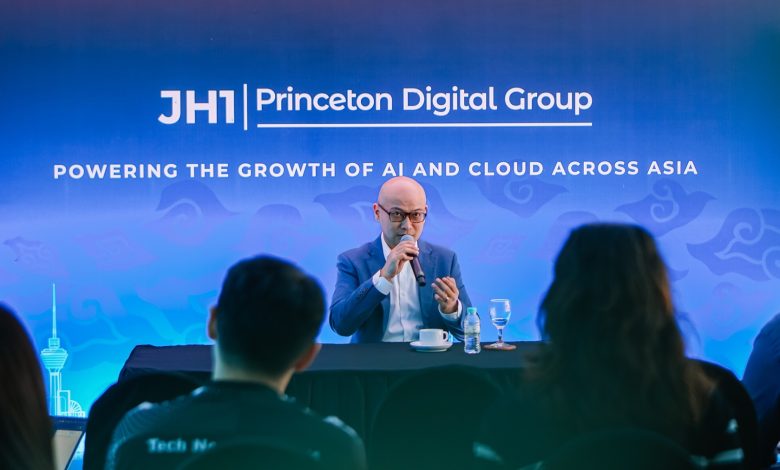PDG’s JH1 Data Centre: A Southeast Asian Tech Powerhouse

As we move into the second half of 2024, businesses across Southeast Asia are gearing up for big strides in the tech industry. Ensuring reliable networks and smooth operations are top priorities, highlighting the critical importance of investments in data centres not just in Asia but worldwide as well. This week in Johor, Malaysia, Princeton Digital Group (PDG) unveiled ‘phase one’ of its massive 150+ megawatt data centre, JH1—one of the largest in the ASEAN region. An impressive feat on its own, underscored by the remarkable timeframe in which the first phase was completed. According to PDG and Johor’s senators and ministers, JH1 could set a benchmark for job creation and the development of skilled talent in Malaysia to meet the growing demand for skilled workers.

Data & Storage Asia was lucky enough to be given a tour of the campus by PDG’s very own Asher Ling, CTO and Managing Director. We would have loved to share pictures of the inside of the campus buildings; however, strict confidentiality rules prevent any external media from taking photos. So instead, we’ll do our best to paint a picture of what’s happening inside PDG’s impressive JH1 Campus and explore the significance and potential benefits this newly opened campus could bring across Malaysia.
The entire compound spans 31 acres, standing out in the open amidst widespread plains. Even though PDG is in its first phase, it already has two consumer substations. The tropical heat is certainly no joke, yet it poses no obstacle to PDG’s data centre interior as it prepares to serve its clientele of hyperscalers and enterprises. Asher explained they have a set temperature to be maintained for the customers and is constantly monitored.
Standing outside their buildings on the compound, the heat would cause you to start sweating within your first 30 steps. Inside, however, I regretted not bringing a sweater to stop my shivering. JH1 uses water-cooling methods by recycling air through a filtered water system, reintroducing cool air as the end result. In terms of ensuring constant power, PDG has partnered with Tenaga Nasional Berhad for their energy supply, in addition to having additional redundancies in place. JH1 already utilises backup generators as well as solar panels as part of its effort to reduce its carbon footprint.
The impressive feat of ‘phase one’ being delivered in 12 months comprises 52 megawatts in capability, incorporating green-planning ESG measures in an extremely favourable location. This achievement was made possible by Malaysia’s enthusiastic movement towards accommodating more data centres, helping PDG set their ‘JH1 Masterplan’ in motion. According to Asher, included in this master plan is PDG’s aim not only to create jobs but also to develop skilled local workers. PDG will be looking to hire and train local workers across multiple disciplines for the setup and operations of the data centre. When asked about PDG’s goals before moving on to their next phase, Asher Ling said their aim was to fill up their remaining plots of land with the next data centres as soon as possible (potentially within 18 months), weather permitting, with rain during the monsoon season being their biggest construction challenge. With this 150 MW-capable data centre campus now active, JH1 can also contribute to resourcing and training for further AI implementation from their hyperscaler clients, who make up roughly 80% of PDG’s clientele.
Overall, the outlook is optimistic as Malaysia and PDG have taken a significant step towards welcoming further tech advancements into their borders. With development fast-tracked and strongly supported by local partners such as Tenaga Nasional Berhad, Malaysia’s JH1 Campus could become a key player in data exchange and storage. Perhaps this could set a precedent and pave the way for further expansion of data centres not only in Johor but across Malaysia as a whole.




